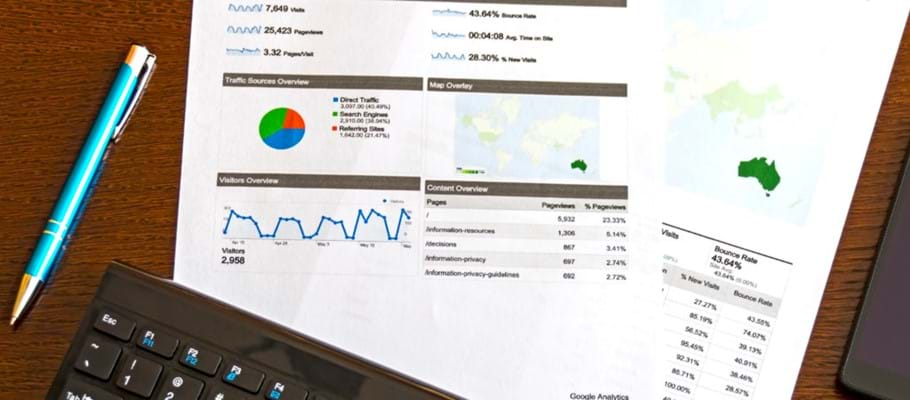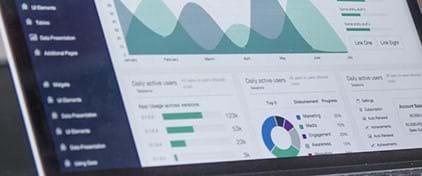Web Analytics
04th June 2018 Simon Steed

With a retail environment, it’s easy to see how customers behave; their general flow, leading to ‘hotspots’ and visibilities of particular product placements, thereby allowing the company to decide how to present the store. However, with a website you can’t see your visitors at all, so something more is called for in order to allow you the same insights.
In 2005, Google rolled out their own version of Google Analytics, using technology from their previously acquired Urchin Software Corp in April 2005. This included a lot more detail than a lot of other tracking software of this time and it has continued to become more feature rich to this day. This is a technology we include on all websites we build today.
In this post, we will cut through the technical terms to explain what each area actually does and will detail how these can be used effectively to give you ideas you can use to develop and enhance your digital marketing campaign.
Goal Tracking
Goal tracking is a useful technique which helps to identify important factors that determine the likelihood of a visit turning into an enquiry. By setting up a ‘goal’ you are telling the analytics what action you consider to be a ‘success’. If you run an online shop, this may be completing the checkout phase (i.e. entering credit card information and completing the purchase), or may simply be completing a contact form, or downloading a brochure or something similar. You can have as many goals as you wish and these can be tied to almost anything that happens once a visitor is in your site.
Doing this, opens up a new possibility: you can then analyse the data collected, filter by those that reached the goal, and work back to how they initially entered the site, what their path through the site was and all other information which helps identify any patterns or factors which may have contributed to this goal being reached. This can also be tied in to your other business reporting as part of your marketing automation efforts.
For instance, doing this may highlight that visits following links from your Twitter account and twice as likely to result in an enquiry, or that people looking for a product A are much more likely to buy on their visit than people looking for product B. Once you have these kinds of insights you can then update your website to reflect this: if people looking for product A are much more likely to enquire, is it worth having a banner advert on each page leading people directly to this product?
Split Testing ( A/B testing )
This is a new technique that appeared as a result of highly developed web analytics and is most useful when used on landing pages. By preparing two versions of a landing page, users can be delivered randomly to version 1 or version 2. Their behaviour is then closely measured using analytics to identify which version of this page has the highest conversion rate.
By repeating this test to tease out each factor that influences behaviour, understanding the customers behaviour better means you can improve the conversion rate of the landing page itself.
Funnels
Once you have set up goals, funnels allow you to get even more detail on the path the visitor took before reaching the goal. These could be (for instance) arriving on the homepage, clicking ‘about product A’ then a page ‘buy product A’. By defining each of these pages as funnel steps, you can then analyse the ‘drop-off’s’ and ‘exit pages’ where people did not follow the beaten path we were expecting. This can highlight optimisation opportunities to make it more obvious how to navigate this path.
Funnels can also be used to produce nice visualisation which illustrates the flows and drop-offs at each step helping you address any of the common reasons or places people do not enquire.

